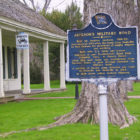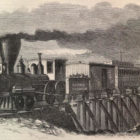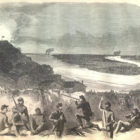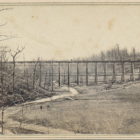Alabama Civil War
Bridgeport Alabama
|
Bridgeport Alabama
Bridgeport is a city in Jackson County, Alabama with a population of 2,728. Because of its location on both a rail line and the Tennessee River, Bridgeport was a strategic site during the American Civil War. The rail bridge at Bridgeport was among those targeted by the East Tennessee bridge-burning conspiracy in November 1861. Bridgeport was the site of a major skirmish on April 29 and August 26, 1862, and numerous other small actions took place in the area. In the latter part of the war, Bridgeport was the site of a major shipyard building gunboats and transports for the Union Army.








